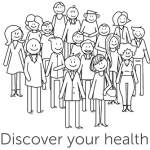 Last year I spoke with Matt Jameson Evans, the founder of Health Unlocked, about the growth of his online community for patients. The site, which launched in 2010, aims to help people make better choices about their health. A sign of their success came in 2012 when they were approved by NHS Choices as a recommended community for patients to use.
Last year I spoke with Matt Jameson Evans, the founder of Health Unlocked, about the growth of his online community for patients. The site, which launched in 2010, aims to help people make better choices about their health. A sign of their success came in 2012 when they were approved by NHS Choices as a recommended community for patients to use.
The site has undergone a few modifications in that time, with a more intelligent filtering system added last year that used a Health Graph style approach to giving users a tailored service. This was recently bolstered with a mobile friendly front-end to offer users the functionality via their mobile devices.
Arguably the most exciting development however is their recent move into America. The move marks the natural next step for the site, as a lot of its users were US based, so it made sense to try and build partnerships with US patient groups, much as it has done with UK based ones over the past few years.
It’s a logical move as US based visitors recently began outstripping UK ones, but nevertheless does represent an interesting challenge given the differing health ecosystems in the two countries. Where the two countries have a clear convergence however is in trying to tackle the healthcare challenges faced by the changing demographics of both nations with an incredibly tight budget.
“I think the US/UK are tackling very similar challenges at the helicopter level (ageing, more overweight, more chronicly ill populations etc), and trying to do so with less available resource. We fit into that population-level low-cost intervention, since better-informed more engaged health populations have better outcomes.” Jameson Evans told me earlier.
There is undoubtedly a strong desire amongst patients to engage with those suffering the same conditions they are, and the past few years have seen a number of patient led communities enter the market to provide patients with just that kind of experience. There is also a growing appreciation amongst policy makers that these kind of groups are at the front line in the battle to encourage a healthier population.
I think the next stage for groups such as this will be to integrate with the official information systems in the medical profession so that there is a pooling of official and un-official advise and a strong level of transparency about the kind of information both patient and physician are bringing to the table.